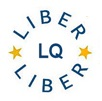Implementing RFID in Libraries for Process Automation - Experiences from over Twenty Current Installations
DOI:
https://doi.org/10.18352/lq.7772Abstract
In recent years libraries enhanced their offer from books to materials like videos, music cassettes and most important CDs and DVDs. These items are quite expensive to buy and therefore have a high demand by the library users. Many libraries also try to offer some kind of social meeting point and incorporate a café or an attractive reading room. This all contributes to the positive new image of libraries. The extension of the collection and the increased demand lead to an increased amount of work and requires more staff. However, it is difficult to get additional budget for continuous costs. It is easier to do one-time investments in order to shift the repetitive work away from the desk and to automatic self service stations. Radio Frequency Identification (RFID) is an established technology (since 2001) to take over the repetitive tasks: check out, return of items, sorting and inventory control. RFID-Systems have a maximum effect if there is also a good room planning which supports their function and the frequency of their use (Kern, 2002, 2004; Wampfler, 2003). In this paper two approaches for the allocation of functional units in a library are compared: · the traditional central allocation of the functional units at the counter (used by the staff); · the decentral allocation of functional units, used by the library visitor. After this theoretical view some practical recommendations for the library and the architectural planner are given. These are derived from experiences of RFID installations in over 20 libraries (Bibliotheca RFID Library Systems AG).Downloads
Download data is not yet available.

Published
2004-06-14
Issue
Section
Articles
License
Copyright (c) 2004 Christian Kern, Marcel Nauer

This work is licensed under a Creative Commons Attribution 4.0 International License.
How to Cite
Kern, C., & Nauer, M. (2004). Implementing RFID in Libraries for Process Automation - Experiences from over Twenty Current Installations. LIBER Quarterly: The Journal of the Association of European Research Libraries, 14(2). https://doi.org/10.18352/lq.7772





